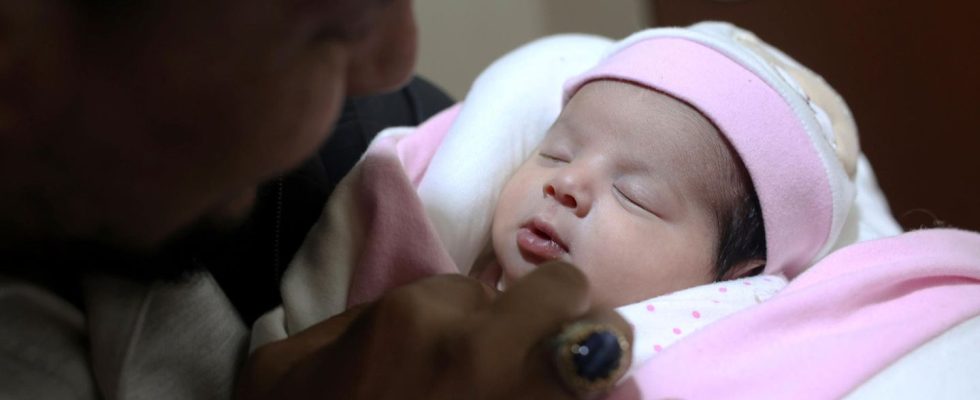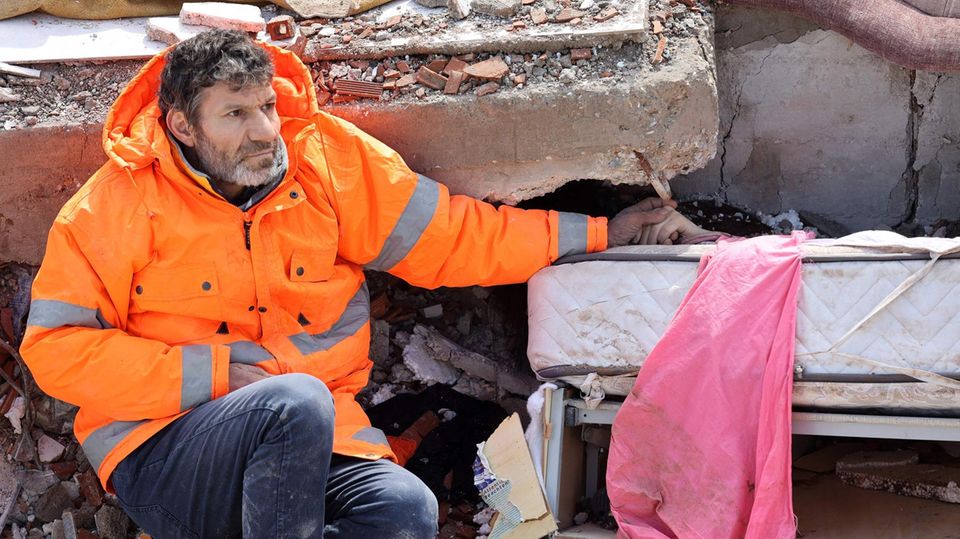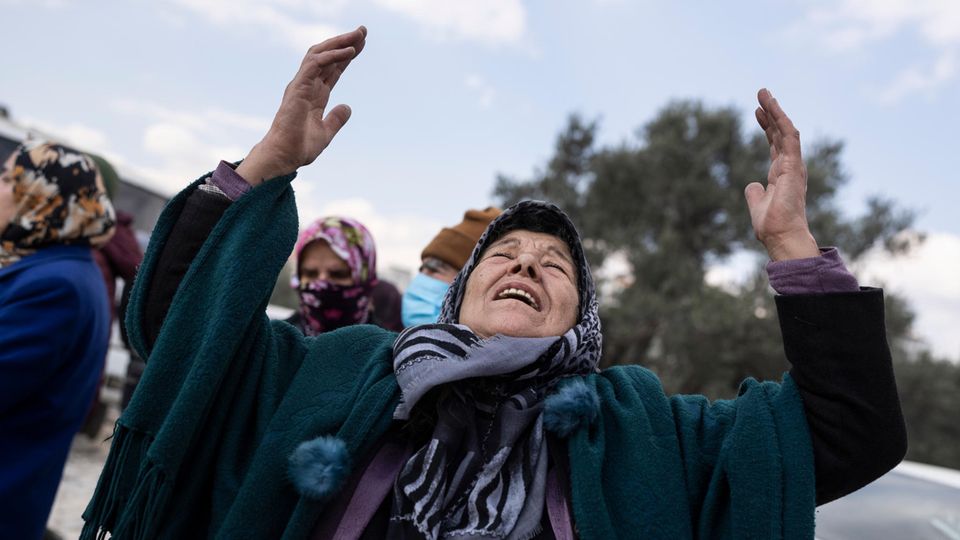Earthquake disaster
“Miracle baby” Afraa from Syria: survivor celebrates her first birthday
Chalil Sawadi looks at Afraa a few days after her birth. The little girl was born under rubble from the earthquake in Syria in early February 2023.
© Ghaith Alsayed / DPA
She was the spark of hope in the earthquake in Syria: Afraa was born under rubble. Now she is celebrating her first birthday. But the scars of the past run deep – especially among the youngest.
She was in the media as a “miracle baby”: while her entire family was in the devastating earthquake in the northwest Syria was killed in early 2023, Afraa was the only one who survived. When rescuers pulled her from the rubble in a house in Jindires, near the Turkish border, she was still connected to her mother by the umbilical cord.
That was a year ago now. “Her birthday reminds us of horror and our lost family members,” says Afraa’s adoptive father Chalil Sawadi. On February 6, 2023, two earthquakes measuring 7.7 and 7.6 struck southeastern Turkey and parts of Syria. Around 60,000 people died, most of them in Turkey. Exact information about the victims from the civil war in Syria is difficult to determine. According to the Syrian Observatory for Human Rights, around 6,800 people died in the quakes across Syria. The United Nations estimates that around 8.8 million people in Syria were affected by the quake. More than 11,000 were injured. Thousands had to leave their hometowns. In addition, a bloody civil war has been raging in the country since 2011, in which, according to United Nations estimates, more than 300,000 people have died.
The search for missing people is still ongoing a year later
Even a year after the disaster, the consequences are still clearly felt in the affected areas. “After the quakes, children in particular were exposed to protection risks,” says Lorena Nieto from the UN refugee agency UNHCR during a visit to a rehabilitation center near Afraa’s hometown of Dschindires. Many children were separated from their families. Both parents and children themselves are still looking for information about their missing relatives. “Another problem is child labor,” says Nieto. Families often no longer have enough income to survive. The risk of children being exploited is still very high. Human trafficking of children from the areas also poses a great danger.
Afraa was adopted by her aunt and her husband after her birth. The responsible authorities had a DNA test carried out to prove that the aunt was actually related to the little one. The new adoptive parents also gave the girl a new name. Afraa is the name of the deceased mother. “I treat her like my own child,” says her adoptive father. But the situation in civil war-torn Syria doesn’t make it easy for him. In addition to Afraa, he also has to take care of his seven biological children.
He doesn’t have a permanent job. “We hope that we can give Afraa enough love to compensate for the loss of her family, whose love she never felt herself.” It is believed that Afraa’s mother died under the rubble shortly after giving birth. Her father and four siblings also died in the disaster. The girl herself remained almost unharmed.
Consequential damage caused by injuries
Many children in north-western Syria are still struggling with the consequences of the earthquake – including the children of Mundaser Ghanam from the hard-hit town of Asamarin near the border with Turkey. “One of my sons died, my other three children and my wife suffered serious leg injuries,” says Ghanam. “We have had several operations carried out, but even a year after the quake we are still suffering a lot,” he added.
All of his children suffered from crush syndrome, where squeezed muscles release clumps of protein that clog the kidneys, which can quickly lead to kidney failure. Toxic substances accumulate in the blood and are normally excreted in the urine. With dialysis (blood washing) in the early stages, the kidney can recover. According to local health authorities, hundreds of the injured people were diagnosed with crush syndrome, although the exact number is unknown.
Similar to Ghanam’s children, Afraa and her new siblings have also been afraid of being indoors since the quake – especially when it rains, lightning and thunder. “On days like this we don’t sleep in the house, but go back into the tents that we still have from the days after the quake,” says the one-year-old’s adoptive father. He himself became a father again just two days after Afraa’s birth. “We lost a lot on the birthdays of the two little ones, but we will always try to make our children happy and help them forget what happened that day,” says Sawadi.



